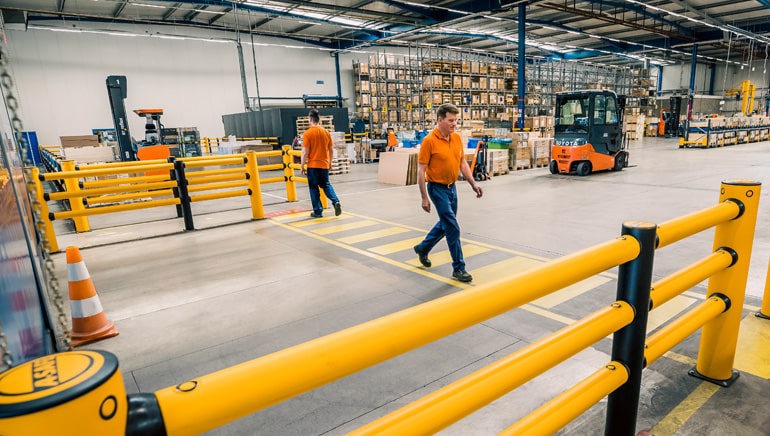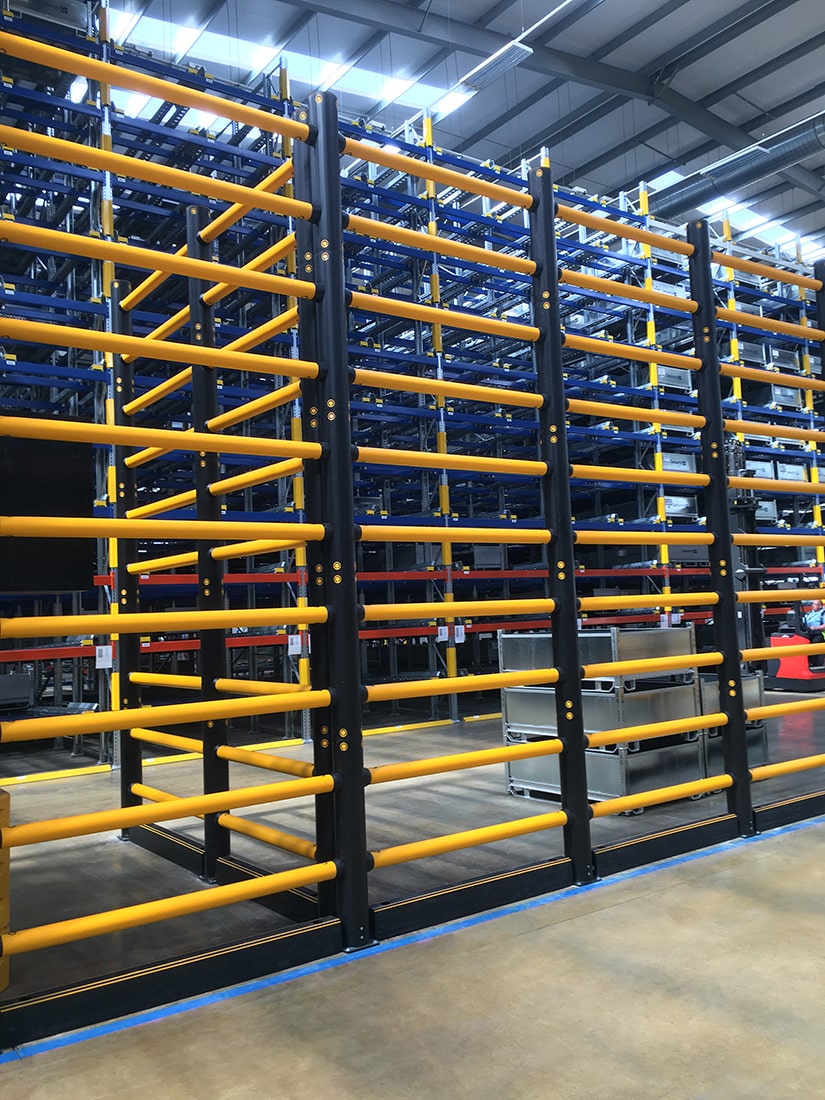
Do you view comprehensive risk management as an operational obstacle?
Modern risk management has evolved in such a way that this perception no longer holds true. For many decades, it was perceived as necessary for protection and compliance, yet detrimental to operational speed and efficiency. Today’s risk-reduction solutions are manufactured with advanced materials and integrate the latest technology, so their capabilities go beyond simple protection.
So, what makes these modern protection systems so effective, and why are they more of an asset than a hindrance?
Modern safety barriers: More than just impact resistance
Gone are the days when safety barriers served solely as impact buffers. Modern barriers are made from polymer, an advanced material that helps them dissipate the force of impacts and maintain structural integrity. Unlike other barriers, which can bend or deform after a collision, polymer barriers can flex and return to their original shape, allowing operations to continue uninterrupted. They are also much easier to maintain, with any replacement taking mere minutes and without having to do any work to the concrete floor, which was the case in the past.
Less downtime means fewer missed targets, smoother shift transitions, and a site that runs closer to plan. For operations managers, barriers that recover after impact keep production lines moving without the delays linked to repairs or floor disruption. Instead of waiting for replacement parts or for concrete to dry and return to full strength, teams stay on task with minimum delay. And with smart barriers feeding live impact data into the system, that operational momentum comes with visibility too.
Turning barriers into data sources through IIoT integration
But it’s not just about resilience. Modern barriers and bollards can also be equipped with sensors powered by the Industrial Internet of Things (IIoT) that monitor impact frequency, intensity, and location. IIoT has transformed risk management into a valuable source that provides non-stop operational data. This data gives operations managers visibility into real-time insights that inform maintenance schedules, predict potential hazards, and identify high-risk zones before they become problem areas. With data-driven insights, businesses can implement more targeted safety measures, reducing the likelihood of costly downtime and disruptions.
Additionally, IIoT-enabled barriers can provide visibility into traffic patterns, allowing for more efficient route planning and hazard identification. By optimising traffic flow and reducing congestion, businesses can maintain safer and more efficient operations while mitigating risk. This proactive approach not only protects assets but also enhances overall productivity.
Shifting the safety narrative: From costly obstacle to growth opportunity
Seeing investment safety as a burden misses its real potential. We upgrade tools and machinery to stay competitive, so why should safety be any different? We wouldn’t rely on a 30-year-old phone or vehicle to meet today’s demands, yet many facilities still depend on outdated systems to manage modern risk. Keeping legacy solutions in place as a cost-cutting measure blocks performance gains that modern safety systems are ready to deliver. It’s counterproductive.
Safety isn’t something you install once and forget. It should evolve with your operations. Today’s systems go beyond simple protection and support the pace, output and precision modern businesses demand. When protection becomes a source of insight, it stops being a drag on performance and starts becoming a driver of it. The question is no longer whether you can afford to upgrade your risk management infrastructure, but how much it’s costing you not to.
Don’t let preventable risks bring your operations to a standstill. Speak with our team to discover how A-SAFE’s bespoke risk-reduction strategies can minimise downtime, protect assets, and drive consistent performance.
Are you ready to bring a new era of risk reduction to your business?

Speak with our team to discover how A-SAFE’s bespoke risk-reduction strategies can minimise downtime, protect assets, and drive consistent performance.

